Filter books by:
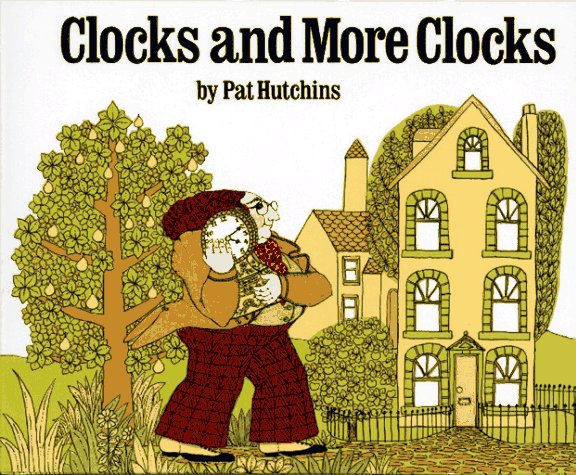
Clocks and More Clocks
Strand
Measurement
Maths Concepts
Australian Curriculum: Description
“When the hall clock reads twenty minutes past four, the attick clock reads twenty-three minutes past four, the kitchen clock reads twenty-five minutes past four, and the bedroom clock reads twenty-six minutes past four, what should Mr. Higgins do? He can’t tell whichc of his clocks tells the right time. He is in for a real surprise when the Clockmaker shows him that they are all correct!”
Teaching ideas
Why have Mr. Higgins clocks been right since he bought a watch?
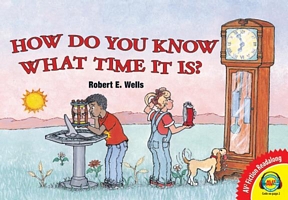
How do you know what time it is?
Strand
Measurement
Benchmarking
Maths Concepts
Australian Curriculum: Description
This book tells the story of time. From the earliest ‘clocks’ devised by Egyptians to moon cycles, solar calendars, Roman calendars, tme zones and time travel.
Teaching ideas
Used for a unit starter. Many fertile questions can be derived from this book. Test the accuracy of the ancient Egyptian 'stick-clock' system.
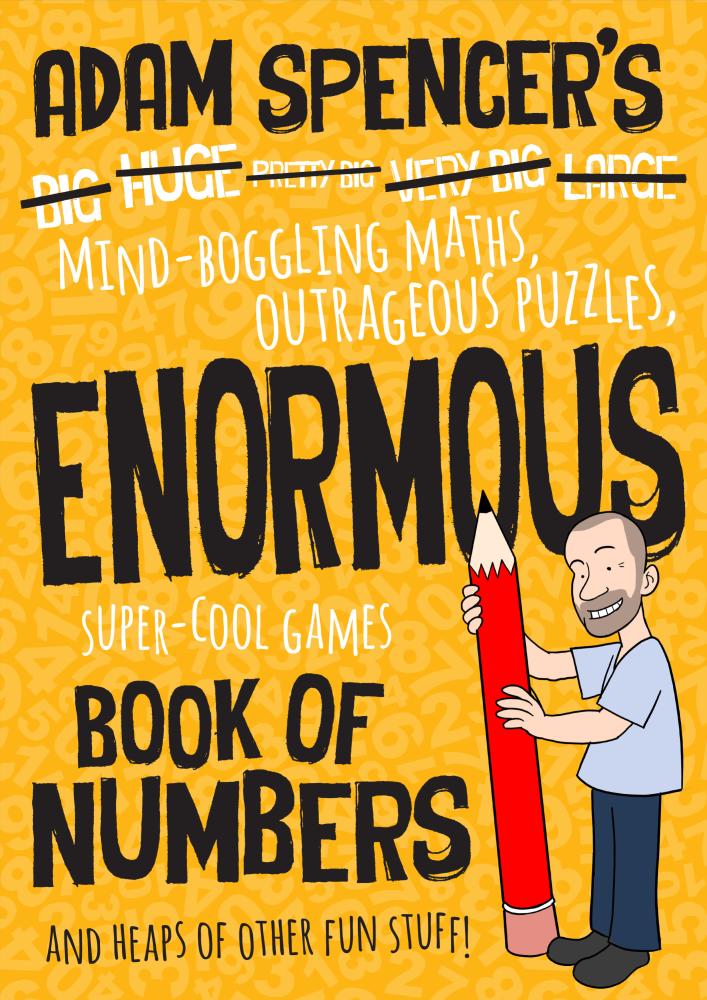
Adam Spencer’s Mind-Boggling Maths, Outrageous Puzzles, Enormous Super-Cool Games Book of Numbers and heaps of other fun stuff!
Strand
Algebra
Australian Curriculum Year Level
Year 5, Year 6, Year 7, Year 2, Year 3, Year 8, Year 4, Foundation Year, Year 1, Year 9
Multiplication and Division Triangle, Part-Part-Whole, Benchmarking, Find the Pattern, Draw what you can't see
Australian Curriculum: Description
Prep-Sort, describe and name familiar two-dimensional shapes and three-dimensional objects in the environment (ACMMG009); YR1-Recognise and classify familiar two-dimensional shapes and three-dimensional objects using obvious features (ACMMG022); YR2-Describe the features of three-dimensional objects (ACMMG043); YR3-Identify symmetry in the environment (ACMMG066); YR4-Investigate number sequences involving multiples of 3, 4, 6, 7, 8, and 9 (ACMNA074); YR5-Use efficient mental and written strategies and apply appropriate digital technologies to solve problems (ACMNA291); YR6-Construct simple prisms and pyramids (ACMMG140); YR7-Draw different views of prisms and solids formed from combinations of prisms (ACMMG161); YR8-Solve a range of problems involving rates and ratios, with and without digital technologies (ACMNA188); YR9-Express numbers in scientific notation (ACMNA210)
Teaching ideas
Real-world application in this book. Cross-curricular links are strong too, science, humanities, music, HPE etc

Miss Lily’s Fabulous Pink Feather Boa
Strand
Measurement
Benchmarking
Maths Concepts
Australian Curriculum: Description
Identify questions or issues for categorical variables. Identify data sources and plan methods of data collection and recording (ACMSP068); Collect data, organise into categories and create displays using lists, tables, picture graphs and simple column graphs, with and without the use of digital technologies (ACMSP069); 4-Use simple scales, legends and directions to interpret information contained in basic maps (ACMMG090); 4-Construct suitable data displays, with and without the use of digital technologies, from given or collected data. Include tables, column graphs and picture graphs where one picture can represent many data values (ACMSP096); 4-Evaluate the effectiveness of different displays in illustrating data features including variability (ACMSP097); 5-Construct displays, including column graphs, dot plots and tables, appropriate for data type, with and without the use of digital technologies (ACMSP119)
Teaching ideas
Information poster on an Australian animal depicted in the book; - Scientific Name - Description - Location (map and description) - Habitat - Diet - Status (Endangered/Not Endangered) - Life Cycle - Data/statistics - Other interesting facts - Pictures/illustrations; or a trifold brochure with the above. With or without the use of technology.
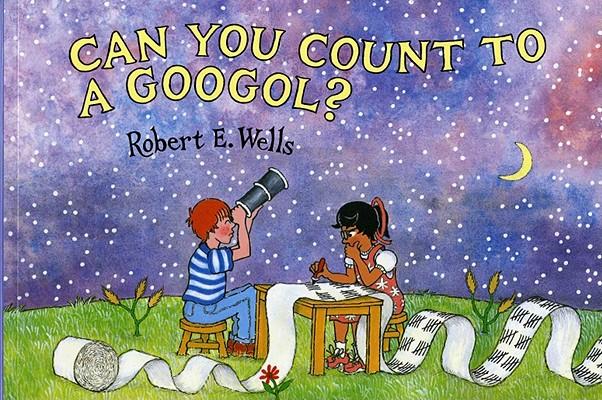
Can you count to a googol?
Strand
Number
Maths Concepts
Australian Curriculum: Description
Recognise, model, represent and order numbers to at least 10 000 (ACMNA052); Apply place value to partition, rearrange and regroup numbers to at least 10 000 to assist calculations and solve problems (ACMNA053); 4-Recognise, represent and order numbers to at least tens of thousands (ACMNA072); Apply place value to partition, rearrange and regroup numbers to at least tens of thousands to assist calculations and solve problems (ACMNA073); 7-Investigate index notation and represent whole numbers as products of powers of prime numbers (ACMNA149)
Teaching ideas
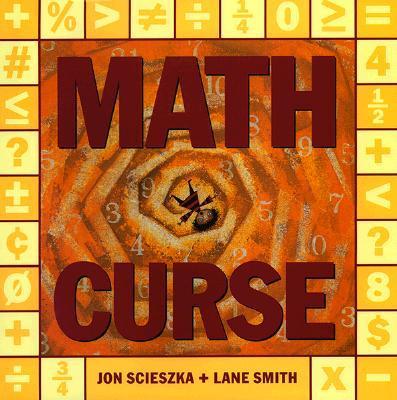
Maths Curse
Strand
Measurement
Maths Concepts
Australian Curriculum: Description
3-Tell time to the minute and investigate the relationship between units of time (ACMMG062); 4-Investigate equivalent fractions used in contexts (ACMNA077); 5-Choose appropriate units of measurement for length, area, volume, capacity and mass; 6-Continue and create sequences involving whole numbers, fractions and decimals. Describe the rule used to create the sequence (ACMNA133)
Teaching ideas
There are lots of concepts explored in this book that could be extrapolated and explored further; (1) time, (2) timelines; (3) multistep problems; (4) conversions between units; (5) fractions; (6) cross KLA references; (7) charts, (8) binary, (9) Fibonacci; (10) money

One Thing : featuring Charlie and Lola
Strand
Number
Maths Concepts
Australian Curriculum: Description
F.Y-Connect number names, numerals and quantities, including zero, initially up to 10 and then beyond (ACMNA002); Yr1-Represent and solve simple addition and subtraction problems using a range of strategies including counting on, partitioning and rearranging parts (ACMNA015); Yr2-Explore the connection between addition and subtraction (ACMNA029); Yr3-Recognise, model, represent and order numbers to at least 10 000 (ACMNA052); Yr3-Tell time to the minute and investigate the relationship between units of time (ACMMG062); Yr4-Recognise, represent and order numbers to at least tens of thousands (ACMNA072); Yr5-Convert between units of time (ACMMG085); Yr6-Select and apply efficient mental and written strategies and appropriate digital technologies to solve problems involving all four operations with whole numbers (ACMNA123)
Teaching ideas
Teach other vocabulary that is often used differently in everyday language such as the examples in the book; e.g. "how about no things" meaning 0 things. Explore time and how long the morning routine takes students in the class. Counting and counting on items.
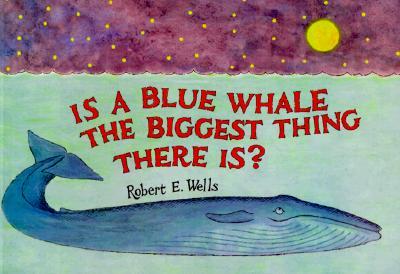
Is a Blue Whale the Biggest thing there is?
Maths Concepts
Australian Curriculum: Description
Yr4 – Recognise, represent and order numbers to at least tens of thousands (ACMNA072); Yr5 – Choose appropriate units of measurement for length, area, volume, capacity and mass (ACMMG108);
